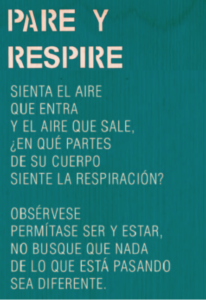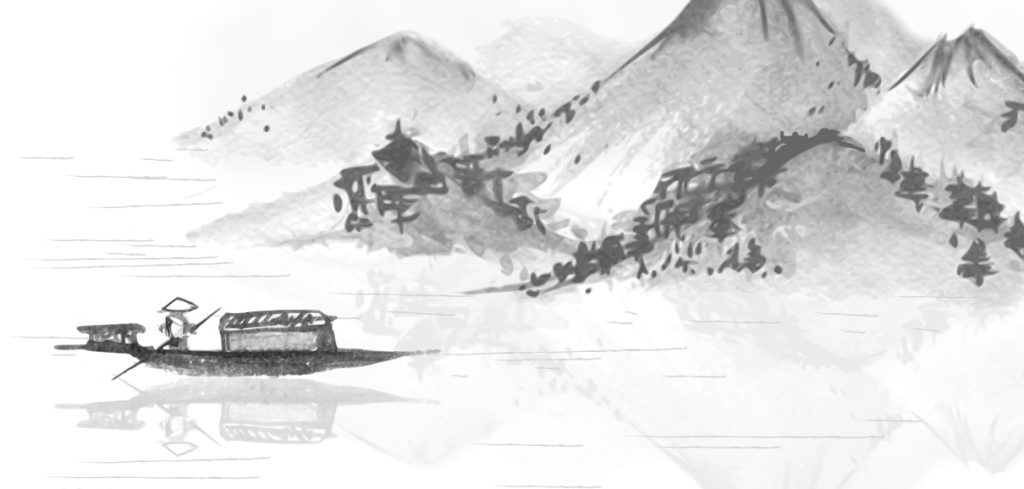Author: Renata Serna Hosie, Director of Methodologies at the Prolongar Foundation
Just as silence houses all the voices of time,
the vacuum stores energy in all forms.
Maria Eugenia Manrique, 2018
A long time ago I knew the weight and the need for pause: the space of time to digest and let the experience reveal to me. That which is between and which allows me to relocate within myself and be connected to my experience.
I wish the void would encompass more space within me. Give an imperative place to the pause. Occupy the space of potential without knowing in advance. Being able to nest and take sides without taking it.
I remember that a long time ago we danced moved by a text by the philosopher Chantall Maillard (2011):
“(…) during those intermediate periods that allow the decantation of experiences. Intervals are just as important to building the journey as black fades and digressions in cinematic narratives. They are the pauses that allow us to assimilate the facts between plane and plane, and they are everything that seems superfluous or irrelevant to the action contributes, however, to create the atmosphere without which the story would not make sense.”
Only when I lived it from the body did I understand the void as a potential: a space to welcome and not to fill. Remembering myself through the text and the dance I recognize my inclination for what it suggests and enunciates without being fully exposed and for the spaces of silence and recollection. A need that with the passage of time manifests itself in a more imperative way than optional.
Reviewing the subject, I am not surprised to understand the nihilistic perception that the void has had from the West: a place of lack, of nothing, of loss and desolation. Perhaps it has to do with what Maria Eugenia Manrique (2017) mentions as the “excessive merit that is given to materialism, individualism, productivity and competitiveness, values that are considered essential” and that in part lead to rejecting any type of vacuum. In contrast, from certain philosophies such as the Taoist, emptiness represents an opportunity to experience ourselves in a unique way and go to meet our own human capacities. The void is that space where the potential resides.
My work at the Prolongar Foundation has shown me the main and significant place of silence, interval and emptiness.
Precisely, the last stage of the Art to Rebuild project, Phase I, consisted of a museographic experience that we call Improbable Encounters. As a strategy and resource to count, mobilize and sensitize visitors, we built panels in the middle of the route that invited them to stop. Almost imperatively, they invited a pause. A space to breathe consciously and thus silence the mind:

The repetition of these panels in the museographic exhibition, are an attempt to lead the visitor to assimilate and decant what he is experiencing and so that he has the opportunity to build a response from his feeling; observe what one’s own experience reveals to him. We wanted the exhibition to mobilize the visitor, cross it, permeate it and not leave it intact. For that it was necessary to understand that it is in the intervals when the information makes sense, becomes its own and revealing.
Margarita Schultz (2016) states that we live in “crowded times and spaces: everything is covered and sounded”. It stirs and disturbs me to think that hyperstimulation leads to a decrease in the acuity of perception and perhaps also to an indifference to the environment. As a defense mechanism, perhaps unconscious, the amount of stimuli generates an impossibility of rapport with presence, a kind of anesthesia (Schultz, 2016). In addition, I perceive that the amount of stimuli, added to the accelerated pace we carry, leads us to move and respond automatically, to use words interchangeably or to repeat ourselves. A repetition that, instead of deepening, stagnates and blocks.
Finally, in addition to the example of the exhibition, I would like to highlight that in the workshops we do in Prolongar, we continuously invite people to connect with that own, intimate and appreciative place of emptiness or silence. Or, if it is alien to them, we invite you to inhabit it little by little and give it meaning. Give and create space internally so that something new can emerge; there, in a new response, a new thought, feeling or in a new possibility of action, lies the potential. This is also a way to break the patterns and cycles of violence. Get out of the automatic and disconvinced – from the only versions and identities.
References and bibliography
Manrique, Maria Eugenia. (2017) Art, nature and spirituality. Taoist evocations. Editorial Kairós.
Schultz, Margaret. (2016) Sense of pause and response of art. Universidad de Chile, Journal of Philosophy.
Maillard, Chantal. (2011). Belgium, Editorial Pre-Textos, 2011.

No comment yet, add your voice below!